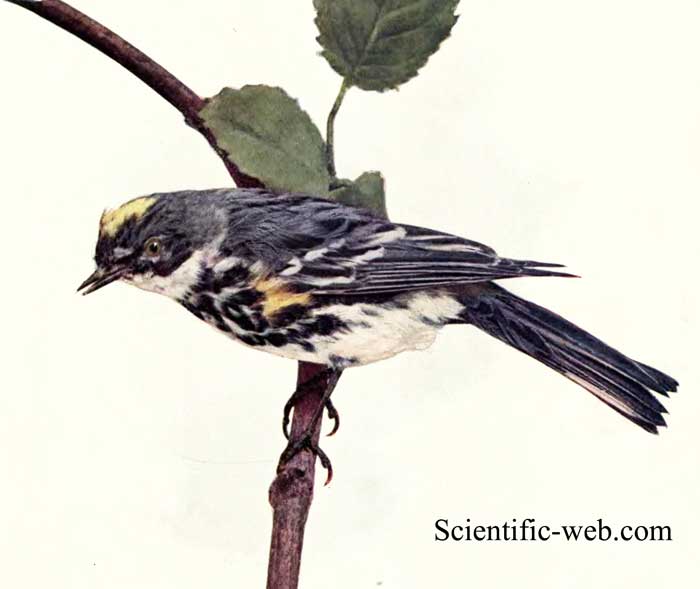Dendroica coronata Cladus: Eukaryota Name Dendroica coronata (Linnaeus, 1766) Vernacular names Four closely related North American bird forms—the eastern Myrtle Warbler (ssp coronata), its western counterpart, Audubon's Warbler (ssp group auduboni), the northwest Mexican Black-fronted Warbler (ssp nigrifrons), and the Guatemalan Goldman's Warbler (ssp goldmani)—are periodically lumped as the Yellow-rumped Warbler (Dendroica coronata). Since 1973, the American Ornithologists' Union has elected to merge these passerine birds as one species. The Myrtle form was apparently separated from the others by glaciation during the Pleistocene, and the Audubon's form may have originated more recently through hybridization between the Myrtle Warbler and the Mexican nigrifrons form. [1] Distribution The Yellow-rumped Warbler breeds from eastern North America west to the Pacific, and southward from there into Western Mexico. "Goldman's" Yellow-rumped Warbler is endemic to the highlands of Guatemala. The Myrtle and Audubon's forms are migratory, traveling to the southern U.S., Mexico, Central America, and the Caribbean for winters. Among warblers it is one of the last to leave North America in the fall, and among the first to return. It is an occasional vagrant to the British Isles and Iceland. Description
These birds are primarily insectivorous, although when bugs are scarce, the Myrtle Warbler also enjoys eating the wax-myrtle berries which gave it its name. They often flit, flycatcher-like, out from their perches in short loops, in search of insects. They nest in coniferous and mixed woodlands, and lay 4–5 eggs in a cup-shaped nest. The Yellow-rumped has a trill-like song of 4–7 syllables (tyew-tyew-tyew-tyew,tew-tew-tew) and an occasional check or chip call note. References ^ Brelsford, Alan; Milá, Borja; Irwin, Darren E.. "Hybrid origin of Audubon's warbler". Molecular Ecology in press. doi:10.1111/j.1365-294X.2011.05055.x. Source: Wikipedia, Wikispecies: All text is available under the terms of the GNU Free Documentation License |
|

